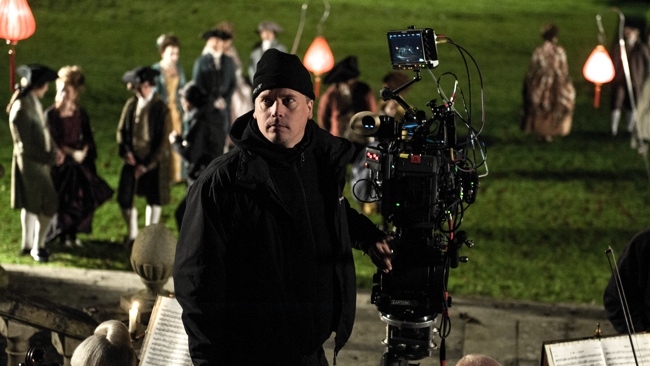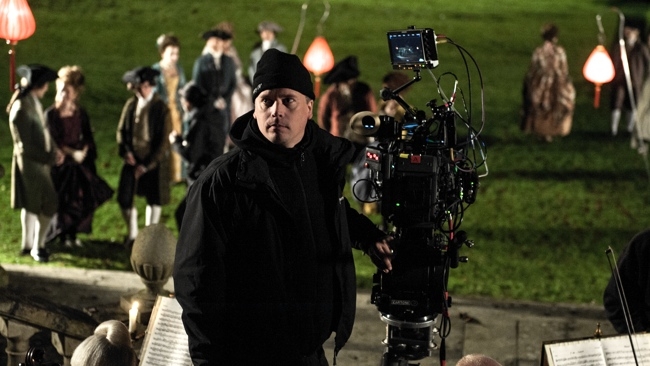
 F65 used for Belle
F65 used for Belle
This is the first of two articles featuring the Sony F65 - currently widely considered to be the best cinematography camera in the world, and the only one to output a true 4K from its 8K sensor. In this RedShark exclusive, Andy Stout talks to DoP Ben Smithard about his approach to shooting period drama Belle with this 4K camera
Period drama ‘Belle’ will be the first UK feature film to be shot in native 4k when it is released later this year. Andy Stout talks to DoP Ben Smithard and DIT (Digital Imaging Technician - essentially an expert technical assistant to the DoP) Natalie Theobold about working at the resolution with the Sony F65.
"From a shooting perspective it was all very straightforward," says Smithard happily. "We used the camera in a number of configurations - handheld, Steadicam, dolly and cranes - to shoot Belle, and spent the majority of the shoot on location on the Isle of Man. The F65 is built for filmmakers – the ergonomics make it easy to use regardless of how it was set up."
High profile debut for 4K
Despite being an independent release,‘Belle’ will in all likelihood be a fairly high profile UK debut for the format. The third project backed by Pinewood Films, the relatively recent offshoot of the famous studio complex, it is directed by BAFTA winner Amma Asante, and has a pleasing array of world-class British character actors including Tom Wilkinson, Miranda Richardson and Emily Watson filling out its cast. The title role is played by Gugu Mbatha-Raw and the story is inspired by a 1779 painting of Dido Elizabeth Belle and her considerable back-story; essentially that of a mixed–race girl raised as an aristocratic lady in 18th Century England.
Cooke lenses were used on the project, not only because they delivered precisely the skin tones that the production was after, but also to produce a 2.39:1 aspect ratio which was felt to be the best fit for the style that the film was shot in.
Naturalistic look
"We were after a really naturalistic look for Belle, in keeping with the period," explains Smithard. "The F65 produces images which have a softer, more pleasing quality, and you could really feel the beauty of 4k. It’s the closest to film that I’ve worked with without actually being film – there really was hardly any difference. As it’s set in the late 18th century we also needed the images to show off the richness of the setting and bring the audience into the piece, and the F65 was the perfect camera for that.
“Initially the footage comes out with S-Log and we would then grade on top using Baselight,” he continues. “Most of the time we had LUTs to work from and then, depending on lighting, we’d dial in a little contrast, but in general the images themselves needed very little doing to them.”
DIT on the project was 4k London’s Natalie Theobold, who adds that the camera draws out the blacks more than other digital cinematography cameras. “You can really see the difference when working on a Sony OLED monitor on set,” she says.
Smithard admits that shooting 4k meant that more time had to be allowed for downloading and backing up files. The production had 9TB of storage on set, and the team cleared the content from the drive every day after backing up.
Straightforward process
“We used around 40 cards in total and offloaded throughout the day,” says Theobold. “We also had a raw viewer checksum to check all the bytes and alert us to any technical problems with the recordings. The SR-PC4 transfer unit also alerts you to any errors on the cards, allowing you to run in-camera maintenance to recover the data. Once we got used to working with the F65 it became a very straightforward process.”
She too is a fan of the image quality that the the production got out of the F65, saying that not only did the pictures have a very organic look to them, but that the wider colour space and extra resolution of the camera really picked out the detail in the period costumes. “Even in low light the detail in things like hair, jewelry and variations in skin tones really stood out,” she says. “Ben was after a natural look for this piece and the lighting was very soft, so working with a camera that with such a wide dynamic range meant we had a lot of control over the image.”
Update
Alan Piper from RED Europe has asked us to mention that in their view the output from their 5K sensor EPIC camera is also "true" 4K resolution. The Epic was first released in 2010.
Tags: Production


Comments